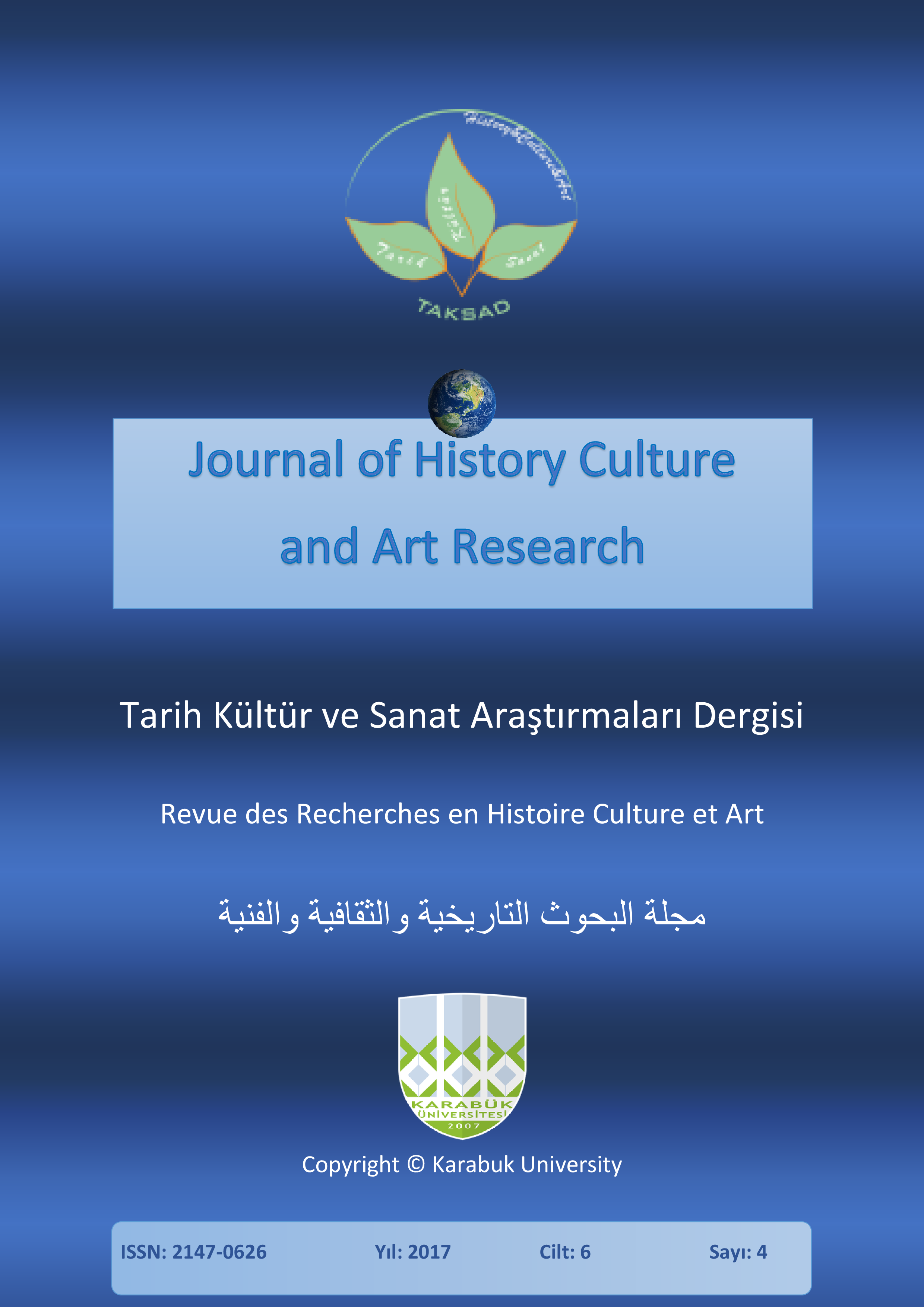The Study of Meanings of Motifs on Artifacts Discovered from Archeological Sites of Gilan Province and their Classification based on Dumézil’s Trifunctional Model
DOI:
https://doi.org/10.7596/taksad.v6i4.1042Keywords:
Motif, Archeological Artifacts, Gilan, Dumézil’s Trifunctional Model.Abstract
Gilan is one of the historical centers which has drawn the attention of archeological and art researchers due to the fact that unique artistic works have been discovered from its archeological sites. The present study seeks to review the meanings of motifs on archeological artifacts discovered from Gilan and to classify the artifacts based on Dumézil’s trifunctional model. This study aims to increase awareness of form and content of designs on historical works of Gilan and to detail historical background of Gilan. To do this, motifs are classified and symbolic meanings of motifs of artifacts discovered from Gilan are consequently detailed. Finally, the three functions of the sacral, the martial and the economic which constitute Dumézil’s trifunctional model for social and cultural structure of Indo-European tribes are used to study the artifacts discovered from Gilan. In general, motifs on archeological artifacts of Gilan could be divided into four groups of plant, animal, human, and abstract which could be analyzed through Dumézil’s trifunctional model. Mixed animal motifs are related to first function and show a sacral function. The artifacts on which war and hunting scenes are represented are concerned with second Dumézil’s function namely “the martial”. Plant and animal motifs and some human figure designs such as figures of historical women are related to certain notions such as life and living which could be categorized into the economic function.
References
Abeddoost, Hossien (2009). The Meanings of Lion Symbol in Ancient Persian Art. Negareh magazine, Issue 8-9, page 87-111, Tehran: Shahed University.
Bahar, M. (2011). Asian religions. Tehran: Cheshmeh Press.
Baring, Anne & Cashford, Jules (1991). The Myth of the Goddess. England: Arkana.
Chevalier, J. (2008). Culture of symbols, sudabeh Fazayeli, (Trans.). Tehran: Jaihoon Press.
Cooper, J. C. (2007). An illustrated encyclopedia of traditional symbols, In Karbasian, M (Trans.), Tehran: Nashreno Press.
Davodi, Nader (2003). Persian Art in Metropolitan museum. Tehran: Cultural Heritage and Tourism Organization.
Domestic & Heavenly Goddeses. (n.d). New York: Howardnows Ancient Art. http//howardnows.com/goddesscat.pdf
Fakhteh, Q. (2004). Chronology of history of Gilan. Rasht: Gilakan Press.
Ghirshman R. & Wiet, Gaston (1966). Tre Sors de L’Ancien, Iran. Switzerland: le Musee Rath-GenEve.
Ghirshman, R. (1971). Persian the Immortal Kingdom: Orient Commerce Establishment, Clifford House.
Ghirshman, R. (1993). The art of ancient Iran, In Behnam, E. (Trans.). Tehran: Scientific and Cultural Publication.
Hall. J. (2001). Illustrated dictionary of symbols in eastern and western art. In Behzadi, R. (Trans.). Contemporary Culture Press.
Jahani, V. (2008). Archeology of Amlash (Rasht): Ilya culture, Cultural Heritage and Tourism Organization.
James, E. O. (1966). Tree of life, Studies in the History of Religions. Leiden: Brill.
Kavami, M. (1992). Ancient Iranian Ceramics from the Arthur M. Sackler collections. New York: Art Hurm Sackler Foundation.
Keshavarz, K. (1968). Gilan. Tehran: Ibn Sina Press.
Khala’tbari, M. R. (2004). Archeological excavations in cultural site of Talesh, Merian—Tandovin. Tehran: Publications of Cultural Heritage Organization.
Mokhtarian, B. (2008). Symbolism of plant and bird in Iranian myths. Isfahan: Art University Press, 1-15.
Negahban, E. (1964). An introductory report of excavations of Marlik site by Roodbar Drilling Board during 1961-1962. Tehran: Publication of Ministry of Culture, Archeological Institute of Tehran University.
Negahban, E. (1988). Review of archeology of Iran during past 50 years. Tehran: Cultural Heritage Organization.
Porada, E. & Dyson, R. (1977). The art of ancient Iran: Pre-Islamic cultures. In Majid Zadeh (Trans.). Tehran: Tehran University Press.
Pourdavood, E. (1998). The Pasht people. Tehran: Asatir Press.
Qolizadeh, K. (2009). Culture of Iranian myths based on Pahlavi texts. Tehran: Publication of Studies and Book Publishing Company.
Rice, T. T. (1961). The Scythians (Ancient peoples and places), In Behzadi, R. (Trans.). Tahori Press.
Samadi, M. (1988). Moon in Iran from earliest times up to emergence of Iran. Tehran: Scientific and Cultural Publication.
Satari, J. (2001). Myth and legend from viewpoint of Georges Domuziel. Tehran: Markaz Press.
Downloads
Published
How to Cite
Issue
Section
License
All papers licensed under Creative Commons 4.0 CC-BY.- Share — copy and redistribute the material in any medium or format
- Adapt — remix, transform, and build upon the material for any purpose, even commercially.
Under the following terms:
Attribution — You must give appropriate credit, provide a link to the license, and indicate if changes were made. You may do so in any reasonable manner, but not in any way that suggests the licensor endorses you or your use.
- No additional restrictions — You may not apply legal terms or technological measures that legally restrict others from doing anything the license permits.







